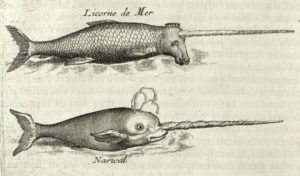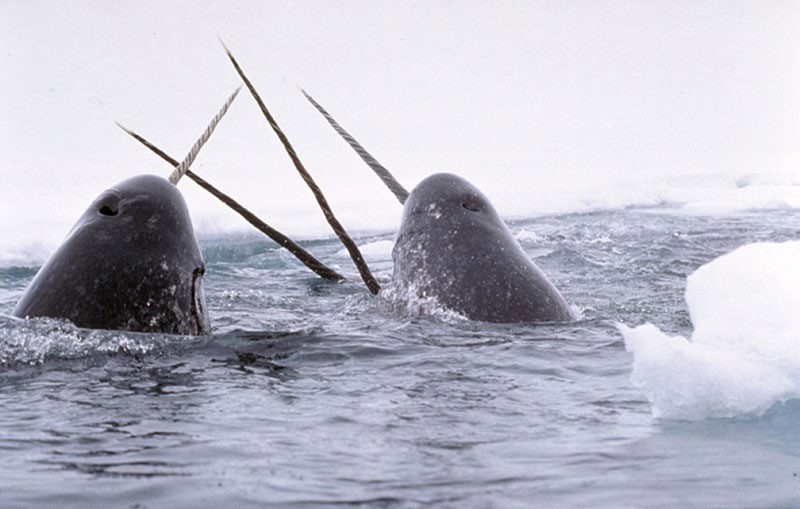Fantastic Beasts and Where to Find Them, Eh?
This blog is written by guest blogger Tina-Louise Rossit.
Task someone with naming a Canadian species and they are likely to mention the polar bear, the moose, the beaver, or the loon. However, we really do have more animals than simply those on our coins! Canada is so spacious, and there are thousands of animals that have found their place amongst the different ecosystems. There are the mountain animals, the forest dwellers, those accustomed to the tundra and those of the sea.
Today’s honorary species is the legendary sea unicorn, the Monodon monoceros, or in plain terms, the Narwhal. This “sea unicorn” has a unique feature that has allowed humans to come up with spectacular stories about the it for centuries. Let’s uncover the truth to those tales!
The most common misconception is that the Narwhal has a horn, when in actuality – it’s a modified tooth! The Narwhal belongs to the family of toothed whales called the Odontocetes. Its closest relative, the beluga, has the similar stocky body, short head and absent dorsal fin. However, unlike other toothed whales, the Narwhal only has two teeth, one incisor tooth that remains embedded in the skull, and the second incisor tooth that elongates into a long, spiral tusk.

Range of narwhal populations in Arctic Canada (From Narwhal, Underwater World)
But why this feature? What’s its purpose? To find out, marine biologists and dentists have teamed up to study the Narwhal in its home habitat. There are three recognized populations of Narwhals for which two of them are the cold Canadian waters of Baffin Bay and Hudson Bay.
These expeditions brought back fascinating results. Firstly, the tusk isn’t even used for defense or sparring as one may hypothesize. Nor it is for impaling prey or to break up ice sheets! Secondly, only males have them. Females may develop them on rare occasions and even rarer is a male with two tusks. Interestingly, Narwhals don’t have any other teeth. That means their mouths are toothless. This may be why they eat fish and squid that are nice and easy to slurp down. Yum!
Here’s what else; with an exceptional amount of nerve endings from the base to the tip of these tusks, the Narwhal tusk is a giant sensory organ. The nerve endings can detect even the slightest changes in temperatures, salt content and pressure of the waters. With only males with tusks, it means that sexual selection played a big part in its evolutionary development. If the males with longer tusks and more nerve endings were able to detect the location of females to mate, they would be the one to pass on their genes.

One of these is Real, from Pierre Pomet’s “Histoire générale des drogues, traitant des plantes, des animaux, et des minéraux.” (Paris, 1694)
Next, scientists are going down to the molecular level to map out the mechanism for this trait expression. What genes signal the spiral formation of the tusk? What are the structures of the hydroxyapatite crystals, which are the main mineral in enamel and dentin? Do the structures differ from other toothed-whales and other mammals? And why?
Until we find out more, there’s still a magical aura around the Narwhal’s natural history. There aren’t too many animals whose mythical nature have graced as many history books, or that have inspired legend and lore since the time of Ancient Greece. Despite the mystery of the Narwhal, if one thing is for sure, it is that these sea-unicorns will continue to leave us in awe.




